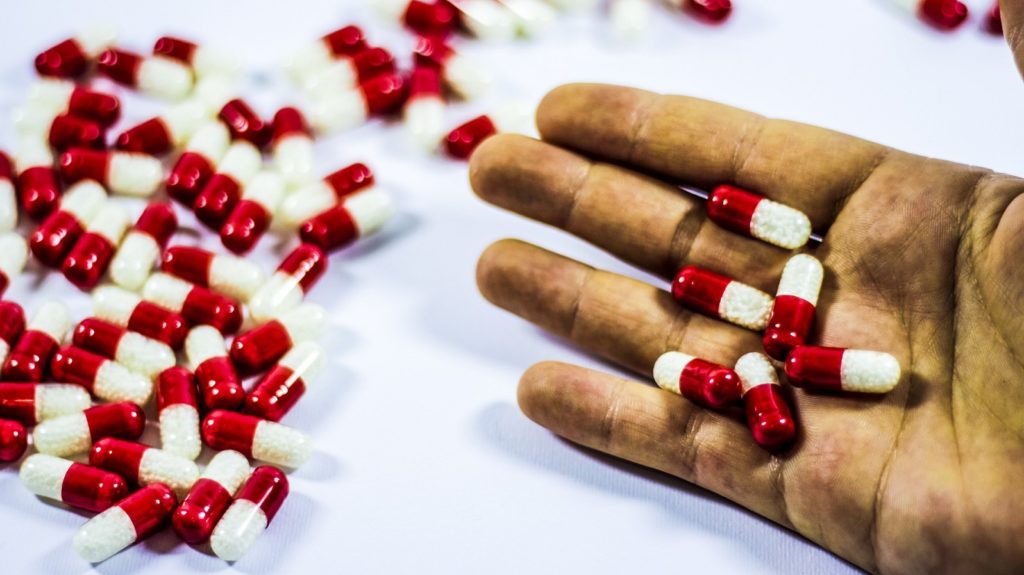We all have them. Those apps we open without thinking. Not because we need anything in particular, but because they feel… safe, in some…
Was SA startup TechnoVera overlooked for Gauteng pharmacy ATM? [Opinion]

On 15 March 2018, the Gauteng Department of Health (GDoH) in South Africa unveiled what they called a “historic ATM pharmacy”. The first ATM pharmacy machine was deployed and launched in the Alexandra township of Johannesburg, at the Alexandra Plaza Shopping Centre.
Also known as the “Pharmacy Dispensing Unit (PDU)”, GDoH went on to state that the PDU is “the first of its kind on the African continent and will reduce congestion in public healthcare facilities”.
How the PDU works is like a typical cash ATM, but for medication. It allows patients to insert their unique “ATM” cards to start the process and with audio-visual interaction between the patient using the PDU and the pharmacists on the PDU screen it then uses a robotic arm to dispense medication as required.
The ultimate aim, and as GDoH demonstrated at the launch, is to reduce the time it takes for patients that collect repeat chronic medication at public clinics and hospitals. In the PDU’s case, this now takes 3 minutes with minimal queues.
Department overlooked TechnoVera despite it being a locally manufactured technology innovation with the potential to create jobs
The robotic technology used to dispense medication by the PDU was developed by a German company, MACH4. Right to Care, along with Right ePharmacy also partnered with GDoH on the project.
“Our partnerships made this innovation possible and we are grateful to the GDoH and for the contributions of USAID and GIZ who are implementing on behalf of the German Government and MACH4.”
“The PDU was developed to ensure accurate dispensing and quick collection. A clinically stable patient on chronic medication can be given the option to collect chronic prescriptions from the PDU pharmacy. While driven by sophisticated technology, patients’ concerns and information needs are still handled one-on-one by tele-pharmacists,” said Professor Ian Sanne, CEO at Right to Care.
Now, let’s roll back to 2016.
What about smart locker?
At a City of Johannesburg event held jointly with the University of Witwatersrand to announce the winners of the city’s #HackJozi challenge. The challenge, as the name suggests, was held annually as a “competition for entrepreneurs with innovative ideas to solve a challenge that the citizens of Joburg face, by developing the best digital solutions to everyday problems.”
The 2016 #HackJozi Challenge was won by, after a rigorous judging process lasting a couple of months (of which I was a judge at), by a startup called TechnoVera. TechnoVera was founded by Neo Hutiri.
The startup, as described on the #HackJozi website and as Hutiri will explain to anyone who asks him what it’s about, manufactures, produces and sells “smart lockers that reduce the average waiting time for patients collecting chronic medication at primary healthcare collection facilities.”
How TechnoVera’s smart lockers work, also note that they are manufactured in Johannesburg, is that a clinic or GDoH would be able to send a patient an OTP (One Time PIN) to their chosen mobile number once their chronic medication is ready for collection.
The patient then goes to the smart locker at the clinic, enters the OTP, and one of the lockers containing the patient’s chronic medication will open and dispense the medication to the patient.
Simple.
In fact, Hutiri had a working prototype at the #HackJozi challenge in 2016 and went on to deploy a trial or pilot at one clinic as he recently told me.
At this point, it’s probably starting to click that TechnoVera’s smart lockers sound awfully similar, in function at least, to what has been punted by GDoH as a “historic ATM pharmacy” and by most media reporters in South Africa as “an Afrikan first”.
There’s several problems here.
The first one is from a history and storytelling point of view. Immediately, by labelling the newly deployed PDU “historic” or “an Afrikan first” you erase, thanks to a few characters, Neo Hutiri and TechnoVera from history. It sounds pedantic, but it matters. I won’t dwell on this point though.
Overlooked?
The other point, which without enough information I cannot form a conclusive opinion on, is that it could be argued that GDoH knew about TechnoVera and decided, for reasons we do not yet know, to overlook TechnoVera despite it being a locally manufactured technology innovation with the potential to create jobs once manufacturing was scaled and an opportunity was given to trial at more public clinics and hospitals.
The point, however, that has lingered on in my mind since reading about the PDUs and having been in touch with Hutiri over the years even after #HackJozi (co-incidentally our last chat was about two weeks ago, a week before the PDU announcement) is that are technology and innovation hubs and incubators that have sprung up all over South Africa and the continent at large doing enough to assist the entrepreneurs they “incubate”?
I ask this because I know TechnoVera was part of several hubs and incubators. I have no doubt they assisted them in one way or the other, but if they can’t assist in leveraging relationships to give entrepreneurs opportunities to gain access to difficult markets then what’s the point?
Perhaps I am looking at this from the wrong angle. Perhaps this is a non-issue and we should all move along and forget about it. Perhaps there’s more that needs to be done.
*Tefo Mohapi is the founder & CEO of iAfrikan Digital. This article originally appeared on iAfrikan on 21 March. Find it here.
Featured image: frolicsomepl via Pixabay

